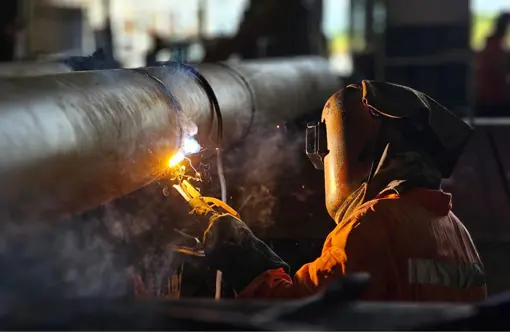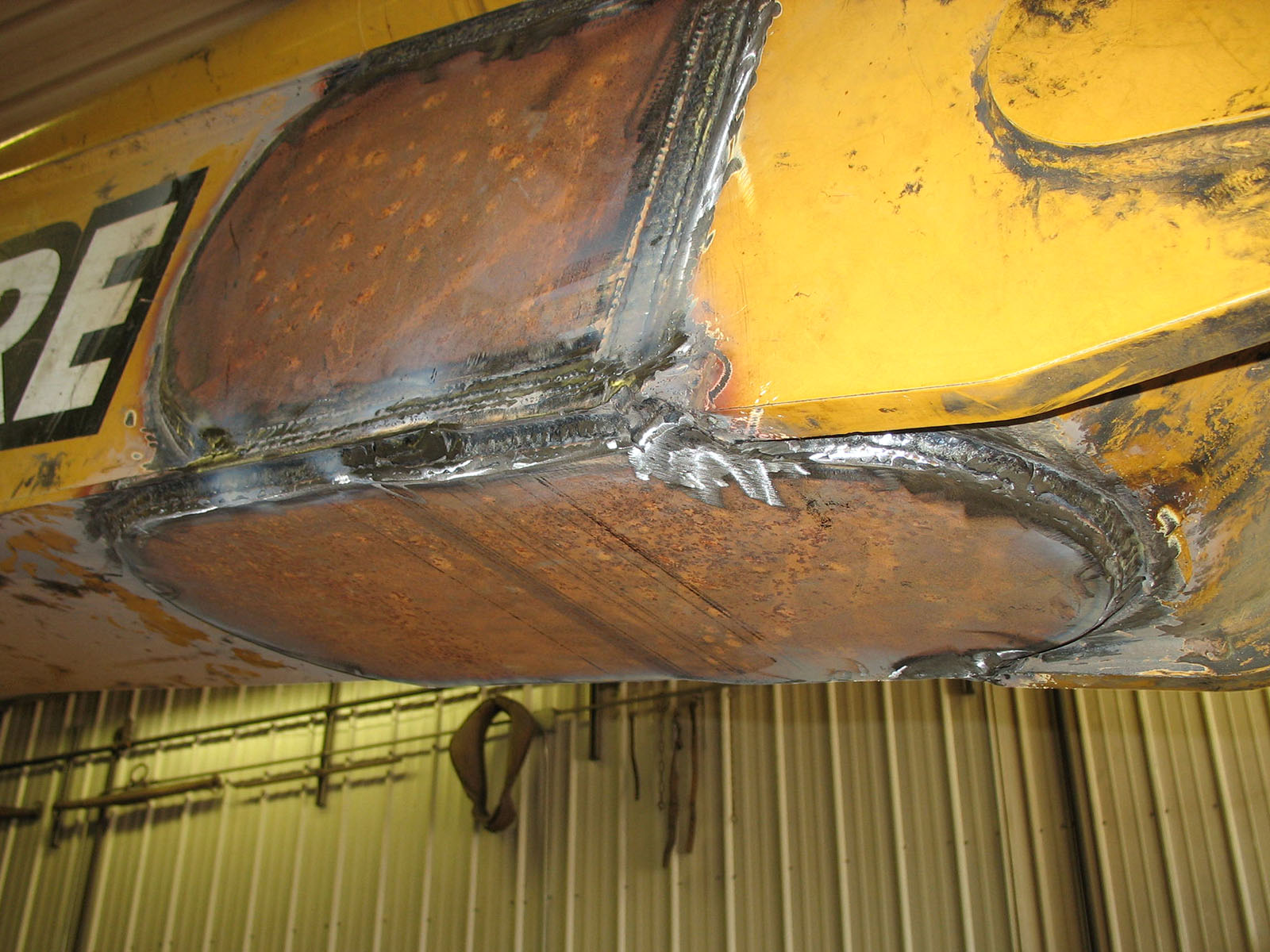Common Welding Fixing Issues and Just How to Address Them Effectively
Welding repair services often come across a variety of problems that can endanger the honesty of the end product. Typical issues include poor infiltration, porosity, and imbalance, to name a few. Each problem offers one-of-a-kind challenges that call for particular techniques for resolution. Understanding these concerns is necessary for welders aiming to enhance their end results and abilities. This discussion will certainly discover these typical welding repair problems and reliable methods to address them.
Insufficient Infiltration
Inadequate infiltration takes place when the weld steel stops working to fully fuse with the base material, resulting in weak joints and potential architectural failures. This problem often stems from not enough warm input, incorrect electrode angle, or incorrect welding rate. Welders might run into poor infiltration due to a mistake of the necessary parameters for a particular product thickness or kind. In addition, contamination on the base material's surface can hinder effective bonding, intensifying the issue. To resolve poor infiltration, welders must ensure ideal settings on their equipment and preserve a clean work surface. Routine examination of welds is advised to determine any type of deficiencies early, permitting for prompt modifications and the avoidance of compromised structural stability in welded assemblies.
Porosity
Porosity is a typical issue in welded joints that manifests as little gas bubbles caught within the weld steel. This issue can compromise the honesty of the weld, leading to reduced strength and potential failure under tension. Belgrade Welding. Porosity normally arises from contamination, dampness, or inappropriate welding techniques, which permit gases to run away right into the molten weld swimming pool. To address porosity, welders need to ensure appropriate surface area prep work, maintain a tidy workplace, and use suitable welding parameters. Additionally, picking the right filler material and securing gas can minimize gas entrapment. Normal assessment and testing of welds can help determine porosity early, assuring prompt corrective activities are taken, therefore preserving the top quality and dependability of the welded structure
Misalignment
Imbalance in welding can develop from different factors, including inappropriate arrangement and thermal growth. Understanding the source is essential for reliable resolution. A number of adjustment strategies are available to realign components and assure structural honesty.
Reasons of Misalignment
Welding misalignment often originates from a range of underlying concerns that can jeopardize structural integrity. One main cause is improper fit-up of parts before welding, which can lead to voids and unequal surface areas. Variations in thermal expansion during the welding procedure can additionally result in distortion, especially if the materials being signed up with have different coefficients of expansion. Additionally, poor securing and fixturing might fail to hold parts securely in location, resulting in movement during welding. Poorly conserved devices, including welding makers and tools, might introduce disparities in the weld grain, further contributing to misalignment. Ultimately, operator error, stemming from insufficient training or experience, can also play a considerable function in developing misaligned welds.
Correction Techniques Available
Dealing with imbalance efficiently needs a combination of rehabilitative methods customized to the particular issues at hand. One common approach is using jigs or components to hold elements in the correct setting throughout welding, ensuring constant placement. Furthermore, preheating the materials can assist reduce distortion and improve fit-up. For substantial misalignment, mechanical realignment strategies, such as making use of hydraulic jacks or clamps, can be utilized to correct the placement before welding. Post-weld warm treatment might also be needed to eliminate stress and anxieties triggered by imbalance. Careful inspection and adjustment throughout the arrangement stage can avoid imbalance issues from becoming significant problems, promoting a smoother welding process and boosting overall architectural integrity.
Distortion
Distortion is an usual difficulty in welding that can emerge from numerous aspects, consisting of uneven cooling and heating. Understanding the reasons for distortion is essential for executing reliable avoidance techniques. Resolving this issue not just enhances architectural integrity yet additionally boosts the total top quality of the weld.
Reasons for Distortion
When based on the extreme warmth of welding, products typically undergo adjustments that can cause distortion. This phenomenon primarily develops from thermal expansion and tightening during the welding procedure. As the weld area warms up, the material increases; upon air conditioning, it acquires, which can create inner stress and anxieties. Furthermore, irregular home heating throughout a work surface can worsen these stress and anxieties, leading to warping or bending. The kind of material likewise plays a considerable role; metals with differing thermal conductivity and coefficients of development might react differently, bring about uncertain distortions. Additionally, poor joint style and inadequate fixturing can contribute to misalignment throughout welding, increasing the probability of distortion. Understanding these causes is essential for efficient welding repair and avoidance approaches.
Prevention Techniques
Efficient prevention techniques for distortion during welding emphasis on controlling warm input and ensuring appropriate joint design. Preserving a consistent heat input assists to decrease thermal expansion and contraction, which can lead to distortion. Using strategies such as pre-heating the work surface can likewise lower address the temperature gradient, promoting uniform home heating. In addition, picking ideal joint designs, such as T-joints or lap joints, can boost stability and lower anxiety concentrations. Executing appropriate fixturing to secure the workpieces in location even more aids in keeping alignment during the welding process. Lastly, staggered welding series can distribute heat extra evenly, protecting against localized distortion. By using these strategies, welders can significantly reduce the possibility of distortion and enhance the total top quality of their welds.
Splitting
Cracking is a typical problem come across in welding fixings, frequently resulting from numerous elements such as incorrect cooling rates, material option, or poor joint prep work. The event of cracks can significantly jeopardize the integrity of the weld, resulting in prospective failings throughout procedure. To resolve this problem, welders have to first evaluate the origin, making certain that products are compatible and appropriately picked for the particular application. Additionally, managing the air conditioning rate throughout the welding process is essential; quick cooling can induce anxiety and result in breaking. Correct joint design and preparation additionally add to decreasing the danger. Executing these basics techniques can improve weld top quality and resilience, ultimately reducing the likelihood of breaking in ended up weldments.

Insufficient Blend
A significant concern in welding repairs is incomplete fusion, which occurs when the weld metal does not sufficiently bond with the base product or previous weld passes - Fabrication. This problem can bring about weak points in the joint, potentially compromising the honesty of the welded structure. Factors contributing to incomplete combination include insufficient warm input, incorrect welding technique, and contamination of the surface areas being joined. To resolve this issue effectively, welders must assure proper pre-weld cleansing and surface preparation, as well as change their welding parameters to accomplish adequate penetration and blend. Regular assessment during the welding procedure can additionally assist recognize insufficient fusion early, enabling timely restorative steps to boost the total high quality of the weld
Overheating
While welding repair services can boost architectural integrity, overheating provides a considerable difficulty that can cause product degradation. Extreme warmth during welding can change the mechanical homes of metals, resulting in reduced strength, enhanced brittleness, and warping. This sensation is specifically crucial in high-stress applications where structural integrity is vital. Recognizing getting too hot can involve visual evaluations for staining or distortion, along with checking temperature level during the welding procedure. To reduce the threats related to getting too hot, welders must directory employ appropriate methods, such as controlling warm input, adjusting travel speed, and utilizing ideal filler products. Additionally, executing pre- and post-weld heat treatments can aid bring back product buildings and improve the overall quality of the repair work, ensuring lasting performance and safety.
Frequently Asked Questions
What Are the Common Signs of a Welding Flaw?

Just How Can I Examine My Welds for Quality?
To test welds for top quality, one can utilize visual assessments, ultrasonic screening, and radiographic techniques. Each method ensures structural stability, determines problems, and confirms adherence to specified standards, ultimately improving the integrity of the bonded joints.
What Security Preventative Measures Should I Take While Welding?
When welding, one ought to prioritize security by wearing ideal personal safety devices, making sure appropriate ventilation, safeguarding combustible materials away, keeping a tidy work area, and understanding environments to stop crashes and injuries.
Can I Repair a Weld Without Redoing the Entire Joint?
Repairing a weld without remodeling the entire joint is feasible, depending on the damages (Montana Mobile Welding and Repair). Methods such as grinding, adding filler product, or making use of a welding procedure can efficiently attend to specific problems while preserving the bordering structure
What Tools Are Necessary for Reliable Welding Repair Works?
Essential devices for effective welding fixings include a welding equipment, cable brush, mill, safety gear, clamps, and filler products. Each device plays a crucial duty in ensuring quality and safety throughout the repair process. Porosity generally arises from contamination, dampness, or incorrect welding methods, which permit gases to run away into the liquified weld swimming pool. Poorly maintained devices, consisting of welding machines and tools, may present variances in the weld grain, further adding to imbalance. When subjected to the intense heat of welding, products typically go through modifications that can lead to distortion. Splitting is an usual issue come across in welding repair services, usually resulting from various aspects such as incorrect air conditioning prices, product choice, or insufficient joint prep work. A substantial concern in welding repair services is insufficient blend, which occurs when the weld steel does not properly bond with the base product or previous weld passes.
Comments on “Expert-backed steps to deal with warping in Montana Mobile Welding and Repair Belgrade”